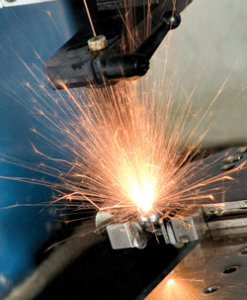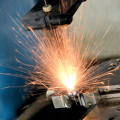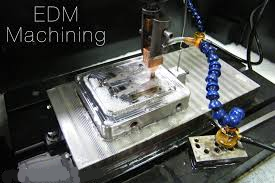 The acronym EDM stands for Electrical Discharge Machining. It traces its origin to 1770 when Joseph Priestly first noticed that electrical discharges removed materials from the electrodes during his experiments. The basic EDM process is actually quite simple.
The acronym EDM stands for Electrical Discharge Machining. It traces its origin to 1770 when Joseph Priestly first noticed that electrical discharges removed materials from the electrodes during his experiments. The basic EDM process is actually quite simple.
It starts with the creation of a spark between an electrode and the work piece. The spark acts as visible evidence that electricity is flowing. This spark produces intense heat that go up to 12000 degrees Celsius that are carefully controlled to ensure that the heat only affects the surface of the material.
The EDM machining process is usually done in deionized water whose conductivity makes the environment excellent for controlling the entire process. At the same time, the water flushes away all the eroded metal particles besides acting as a coolant.
Modern Electrical Discharge Machining
Modern EDM equipment makes use of equivalent and highly effective tiny lightning bolts in the removal of material. Although this process is considered to be slow in terms of the rate of material removal, the EDM machine is capable of machining multifaceted shapes in hard metals.
In the contemporary world today, makers of jet engine components, dies and molds heavily rely on EDM’s.
The Electric Discharge Machining Process
The process includes a work piece and an electrode. These are both submerged in dielectric fluid and current is allowed to pass through the electrode and the work piece again and again creating tiny plasma zones with temperatures of up to 1000 degrees Celsius.
These high temperatures result in the instantaneous and localized melting of the material in question. Even though the process may seem violent, it only occurs on a small scale such that the metal removal can be precisely controlled.
The electrode in the modern day EDM machinery takes different forms. Wire EDM machines make use of a thin wire that is used to cut with electricity, with the wire moving forward into the hard metal part as a slow-motion saw blade.
Die sinkers, technically referred to as the ram EDM’s, use electrodes that are custom made into 3D shapes. Electric discharge machining then produces a cavity in the opposite electrode.
Other Types Of EDM Machines
There is also the small-hole EDM, often referred to as the ‘hole popper’. In this machine, the electrode is made up of a cylinder that is used to machine a hole that is normally used to provide starter holes for the wire EDM. However, this same technology can be used in machining finished holes in materials that are deemed too difficult to drill.
Modern EDM machines have been customized in a way that assists operators with both simple and complex projects effectively. At the same time, the modernized electric discharge machines can also be used as value added resources in many manufacturing processes.

